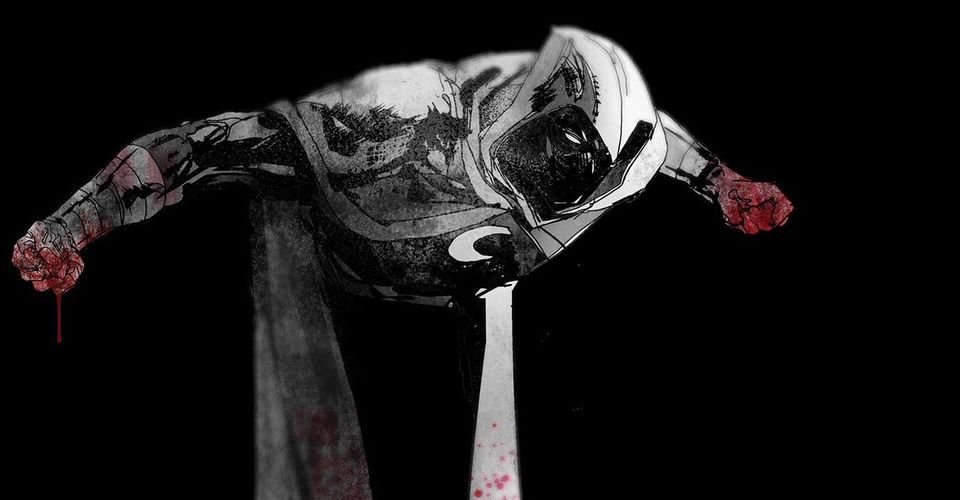Moon Knight’s Bloody New Series Contradicts What Made Him Great

Recently, Marvel Comics has found success with its Black, White, and Blood series, an anthology which follows its most lethal characters such as Wolverine, Carnage, Deadpool, Elektra, and now Moon Knight. Rendering each of its stories in a stark palette of black, white, and blood red, the series is one of Marvel’s more violent offerings to date. Moon Knight’s iteration is set to begin in April with Moon Knight: Black, White, and Blood #1 from a creative team including Jonathan Hickman, Chris Bachalo, Marc Guggenheim, Jorge Fornés, Murewa Ayodele, and Dotun Akanda. This coincides with the release of the Moon Knight television show on Disney+, marking the Fist of Khonshu’s MCU debut.
Moon Knight has been one of Marvel Comics’ most troubled characters for close to fifty years now. Created by Doug Moench and Don Perlin, Moon Knight is the superhero persona of a former mercenary named Marc Spector. Brought back from the dead by the ancient Egyptian god, Khonshu, Spector was tasked with protecting all travelers of the night. The task has not been easy, as Spector’s struggles with dissociative identity disorder led to the creation of two other alternate personas, playboy Steven Grant and cab driver Jake Lockley. Recent Moon Knight comics have focused on Spector’s life with mental illness, and his efforts to rectify the violence of his past with his actions in the present.
While his inclusion in a series like Black, White, and Blood may not be surprising when considering the brutality of some of Moon Knight’s kills in the comics, Moon Knight’s relationship with violence is far more complicated when taking into consideration his larger publication history. In his earliest stories with creator Doug Moench, Moon Knight’s methods focused heavily on deescalation, as his foes were often ordinary people who had fallen on hard times. Flying through the violent streets of 1980s New York City, Moon Knight was perpetually haunted by the idea that very little good could come out of swinging his fists. With this history in mind, Moon Knight: Black, White, and Blood could potentially apply a level of violence to a character whose complexities make it questionable. While comics are inherently an evolutionary form, the terms of a character’s development deserve to be examined.

Moon Knight’s foray into violence also brings up his longest-standing problem: his lack of a rogues gallery. While this has been interpreted as a symptom of his habit of killing his enemies, it is also because his foes in Moench’s run were not scheming villains, but troubled people whose actions forced Moon Knight to reconcile with problems facing his city. If Black, White, and Blood is cognizant of this history, then it can provide a nuanced solution to the problem through giving him a recurring villain.
Ultimately, in its own way, the Black, White, and Blood series aims to provide catharsis through violence, a matter made more thorny due to the fact that Marc Spector has mental illness. Seeing Wolverine slash his way through bigoted foes or watching Elektra show off her skills as an assassin is one thing, but what catharsis can be achieved from reading about a mentally ill person beating people to a pulp? With the sensitivity placed to Marc Spector’s mental illness in recent Moon Knight runs, how will Black, White, and Blood balance the character’s capacity for brutality, while also avoiding conflating it with his DID? These are questions that Moon Knight: Black, White, and Blood will have to address when the first issue releases in April.
About The Author


















